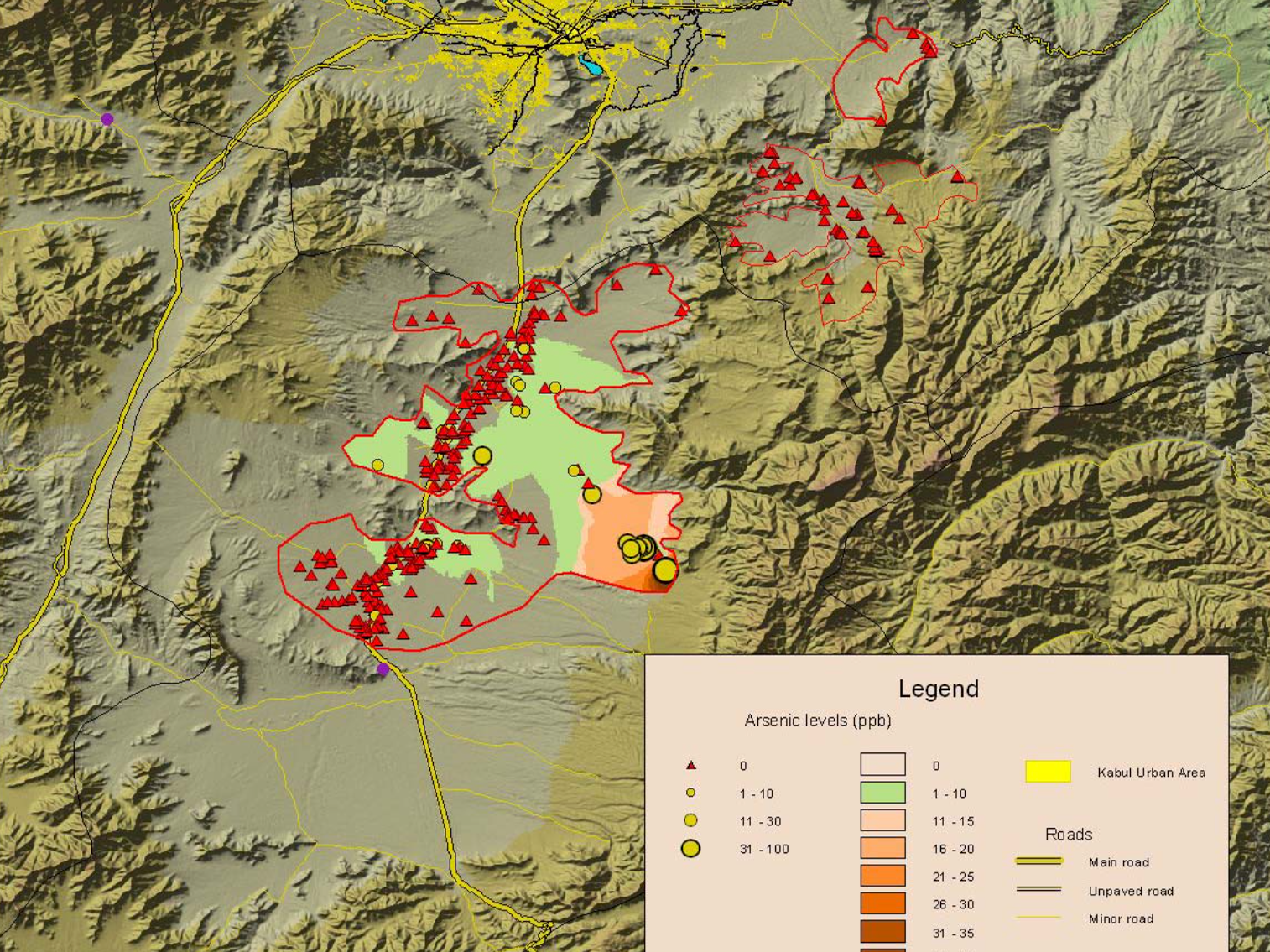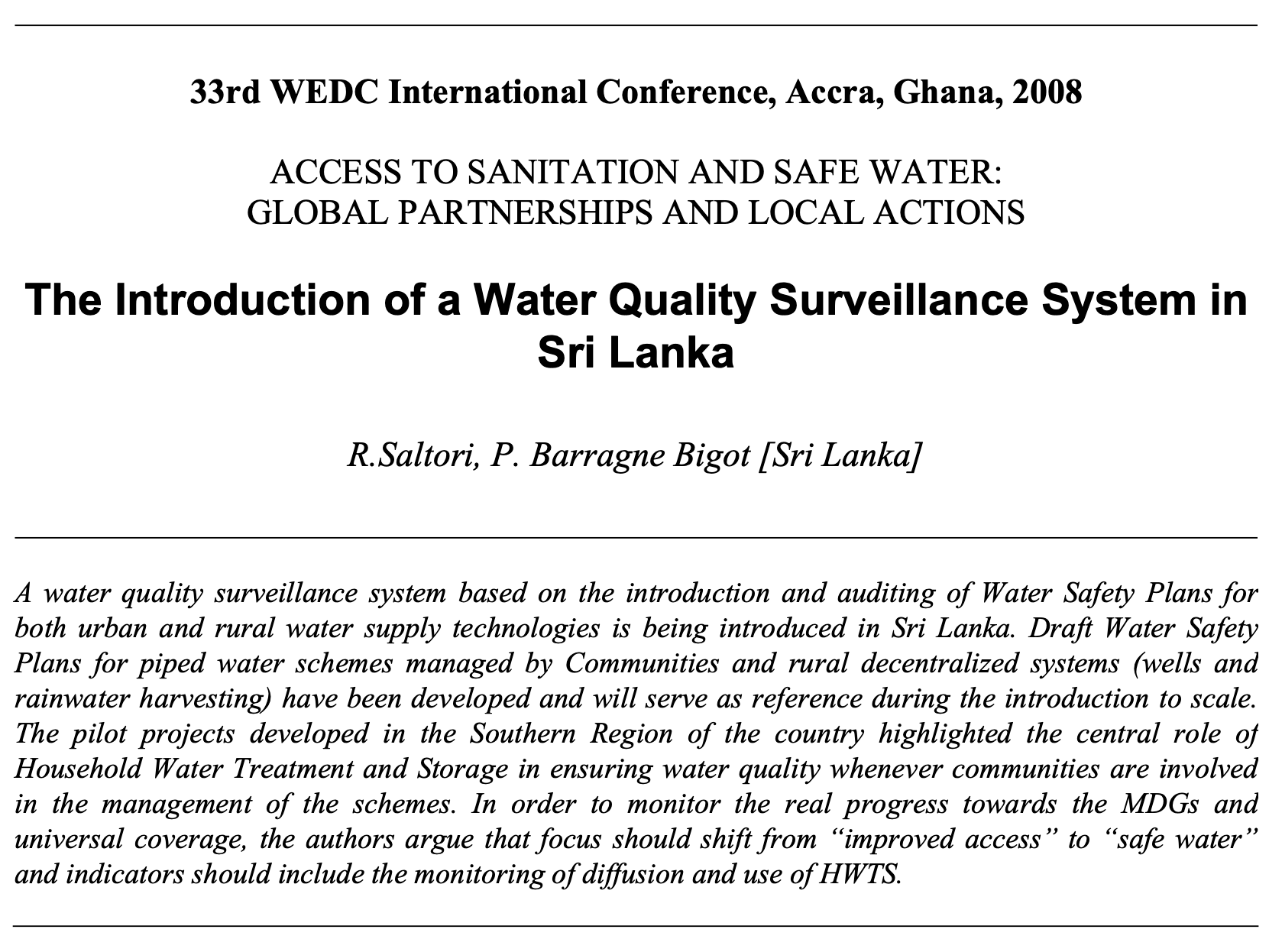... AND WHY WE SHOULD ALWAYS USE A DOUBLE PINCH OF SALT WHEN SEEING THE NUMBERS IN EMERGENCY
Liters per capita – day (lpcd) is a basic indicator in water supply, and, especially in emergency, represents the cornerstone of WASH (Water, Sanitation, Hygiene) planning. In every emergency, very early on UN, NGOs and cluster alike rush to give out estimates of the lpcd accessible to the population.
There are, however, at least two issues that should be critically considered:
What is our target? (How much is “sufficient”?)
How do we estimate, and monitor, the lpcd value?
How much is “sufficient”?
The first is a long standing, infamous issue. As evident in the field, and still confirmed over more than 50 editions of the WiE (WASH in Emergency) training, over 90% of the WASH practitioners still believes that the SPHERE standard for water supply – (quantity) is 15 lpc/d, and is incredulous to learn that the standard is, in fact, “sufficient”. How much is sufficient? The new edition of SPHERE (2018) will specify clearly that the indicator for “sufficient” has to be determined, case by case, by the team in the field, ideally coordinated by the WASH cluster. The “15 lpcd” rule of thumb indicator still remains, but we need to understand this is an “ok” initial planning figure in camps, in sub-Saharan Africa. It is certainly not adequate, for example, in urban contexts in the Middle East, where assessments [1]proved that the minimum quantity of water should be in the range of 50-80 lpcd.
So, the first issue is: what should be our target? Using the 15 lpcd can be a good planning figure as starting point, but a more correct value should be estimated, based on evidence, early on in the response. This is also an AAP (Accountability to Affected Population) issue: can this be estimated without the input from the beneficiaries?
How do we measure lpcd?
Ok, let’s say that the cluster concluded, based on assessment, observations, KAP (Knowledge, Attitude, Practice) survey and focus group discussions with affected population (!!) that the value of 15 lpcd is correct for this emergency. Great. Now we need to monitor it, and on this base, estimate the supply gap. Easy? Not so fast.
Estimation of lpcd can essentially be done in two ways: supply against users (camp, settlement, town), or or at HH (House Hold) level, on a randomized sample.
Needless to say, the first option is the one used most of the times. In camps, or in settlements, or towns with centralized supply system, it seems quite straight forward. We know ( do we?) how much water is produced, and we know ( do we?) the population served… et voilà,, xxx m3/ day divided by camp ( town, settlement) population, here is our magic number.
In a recent visit in a camp in South Sudan, a review team I was part of was provided the lpcd estimate with a decimal figure accuracy. Wow. The supply is provided exclusively via small networks connected to boreholes, and the camp is well established, so the conditions are ideal. Right?
Right. However, none of the wells is provided with flowmeter, no recent flow measurements have been done after the initial pump test (years ago) and no exact record of the number of production hours is kept. Of course, no leaks, no consumption in schools, clinics, etc. So, what is the error on the numerator? More importantly, different actors had different estimates of the population resident in the camp: from 135k to 60k. More than 100% discrepancy. What is, than, the reliability of the estimate of the lpcd? And thanks for the one “significant figure”, the one-decimal “accuracy”!
When using this estimation method, there will always be uncertainties are on the quantity produced. We already mentioned the wells without flowmeter: but what about the quantity delivered by tankers?; leakages in the network; illegal connections; multiple day interruption of service. How much water is used in clinics, schools, and… brick making? The biggest (and often outright ignored) challenge is represented by the presence, more often than not, of multiple sources of water ( network, private vendors, private wells, rivers, ponds, etc). Add the uncertainties in estimating the production of hand-pumps, solar systems, etc.
On the denominator side (the population served), we need to assume a stable population: how often is this true? Even in the cases where the beneficiaries are registered, some might spend the day at the village of origin, coming back only for the night, or weekly for the food distributions! Estimates of registered residents often vary according to the source. Funding is proportional to size, so such estimates, more often than not, get quickly charged with agency interests and, sometimes, even local political significance.
Good practices exists, but this is just to show how our “estimate” of the lpcd might end up depending on a number of assumptions on the supply side, and the political line we want to maintain on the denominator.
Try to think how to use this method with sparse population, outside settlements.
The other method requires an estimate at HH level. Each HH should be enquired on different sources of water, the different storage containers, how often they are filled, etc. This method can provide an accurate estimate, and provide deep understanding of the water supply dynamics even in complex situations, with different sources complementing each other. Needless to say, this method requires a significant, random sample of HH to be valid. This method CAN NOT be used on a KI (Key Informant) interview (think: if you were asked, would you know how much water do you consume in one day? No? Of course not. Even less you would know the average consumption in your village, block, etc).
Question: how often a HH level assessment on a random sample is conducted, and how often is it repeated? Most emergencies never see a randomized WASH HH assessment, at least not in the first three/four years if any at all.
Knowing all this, shall we really rely on the lpcd as planning and programming tool? Really?
Planning, certainly. The lpcd is, and should remain (with targets based on evidence, not assumptions), the base for all our estimates for both financial, programmatic and engineering planning.
What about monitoring?
The alternative
How do we really know if a certain target group has “sufficient “water? Fortunately, there are simple, and, I would argue, more reliable methods than the lpcd.
Which one? In every aspect of life the presence of queues is one infallible indicator of scarcity of a given resource. So, queuing time is a very sensible indicator, easy to spot. SPHERE can help us out here, as an indicator for max queuing time exist (I suggest you rush to check this out ). Reliance on different sources, or water vendors, is another proxy suggesting scarcity. A larger then normal (what is “normal”?) storage is an indicator of unreliability, or infrequency, of supply. And so on. Those outcome level indicators can be cheaply collected by generalists, and can be included in routine monitoring programs like DTM (Displacement Tracking Matrix) and other similar initiatives, and therefore updated regularly (and reliably).
In the case in South Sudan I mentioned earlier, the figure provided to us was between 14.8 and 15.2 lpcd, so incredibly close to the magic number, 15. I would rise a legitimate suspect that the lack of queues suggested that the water was “sufficient”: and if water is “sufficient”, than must be close to 15 lpcd. Therefore, 15 lpcd is the right indicator for us. Wonderful example of circular thinking and self-fulfilling prophecy.
So long, and thanks for all the… “evidence”!
Originally posted on February 15, 2018









